A number of readers have written in the last months to offer their own recommendations of neglected books and authors, so I will take this chance to gather them up into a single post.
- • These Lovers Fled Away
, by Howard Spring
- Allen Johnson, Jr. wrote, “I commend to you the pastoral novels of Howard Spring (These Lovers Fled Away is probably the best). Set in Cornwall England in the early 1900s and usually written in the first person, Spring’s novels convey with great clarity the beauties of Southwest England and the hearts and minds of those who watched those beauties being eroded by machines and war.”
He added, “My own novel, My Brother’s Story, was published by a small press that immediately went out of business. It came out as a young adult novel but is enjoyed by all ages. It is available as a free download author-read audio book at www.allenjohnsonjr.com.”
Howard Spring was one of the most successful middlebrow English novelists of the mid-20th century. A number of his stories have been adapted as successful television mini-series, most notably My Son, My Son
and Fame is the Spur
. Earlier this year, novelist Tim Stretton compared with A. S. Byatt’s The Children’s Book in his Acquired Taste blog and gave Spring a slight edge. A few minutes spent Googling Spring’s name soon turns up more than a few readers still enthusiastic for Spring’s gift for characterisation and story-telling.

- • In Praise of Shadows, by Jun’ichiro Tanizaki
- Painter Benjamin Varney, who also writes the Bonelab blog, recommended this slim volume by Tanizaki, best known for the novel The Makioka Sisters: “my understanding of the book is that it is the product of a life times’ work. that tanizaki is giving the world his poetic vision of japan distilled: finding vision of its own within a (vernacular) history of japanese spirit and values. to call it asthetics does not do it justice & it is resistent to most categories, it works best as an explication of a complex philosophy, as flawed and as personal as any. it’s a short book read it.”
In the book, Tanizaki meditates upon the blend of aesthetics and spirituality known as Wabi Sabi, an untranslatable term that treats the things of this world as “imperfect, impermanent and incomplete.” Zen gardens are perhaps the best known examples of this sensibility, but it pervades much of traditional Japanese culture, from the design of temples to the rituals of the tea ceremony. Tanizaki believed it was a culture that found “beauty not in the thing itself but in the patterns of shadows, the light and the darkness, that one thing another creates.”

- • Vienna Girl
and The Water Castle
, by Ingeborg Lauterstein
- Kathy wrote to recommend these two novels by Lauterstein: “It occurs to me that you might be interested in taking a look at ‘The Water Castle’ and ‘Vienna Girl’ two novels which follow a young Austrian girl through WWII–they have a strange magical realist cast and I found them absorbing and quite outside the normal type of stories of this period.”
Lauterstein, who was born in Austria and studied art with Oscar Kokoschka, emigrated to the U.S. and attended the legendary Black Mountain College. There, influenced by the poet Charles Olson and the novelist Caroline Gordon, she switched from art to fiction and began work on the two books. Marriage and family interrupted her work, and the books were not published until nearly thirty years later–The Water Castle
in 1981 and Vienna Girl
in 1986. Although both were praised in reviews–the New York Times’ reviewer called Vienna Girl “an engrossing story of people in radical transition” and wrote that Lauterstein “transcends pedestrian historical fiction and eschews simplification about the holocaust”–they quickly slipped out of print.
Lauterstein recently republished the books under her own imprint, along with a third novel, Shoreland, so all three are now easily available online.

- • Winter in the Hills
, by John Wain
- From Texas, Mary Jo Powell wrote to describe her rediscovery of the works of John Wain: “I can’t remember what awoke my interest in John Wain but I have now read five of his books and am looking for others on the usual sites. As best I can tell his work is only available on used book sites these days. He is not an experimental writer but is concerned with how an individual opposes the forces of standardization in regular life. Hurry On Down
–usually called the first Angry Young Man book– and his biography of Samuel Johnson are the books you are most likely to be able to find (in used book stores and sites) these days. I haven’t read the biography and I found HOD all right but much prefer the books in his Oxford trilogy [Where the Rivers Meet
(1988); Comedies
(1990); and Hungry Generations
(1994)] and one set in Wales: Winter in the Hills. His protagonist is always randy and also looking for a way to eke out a living without giving up his soul. If you Google his name, you will be asked if you aren’t looking for John Wayne, although you will be offered some sites to the author.”
Wain, who died in 1995, has certainly fared less well than his contemporaries, Kingsley Amis and Philip Larkin. Professor Krishna Kumar has turned his thesis on Wain’s novels into a website, and earlier this decade, an independent publishing house named after one of Wain’s novels, Smaller Sky, brought several of his books briefly back into print. Winter in the Hills, considered his best novel, is about an English linguist who travels to a remote Welsh village to study the language and gradually finds his way into a very tightly-knit community.
- • Finnley Wren
, by Philip Wylie
- Joe Kenney asked, “Have you read anything by Philip Wylie? I’m halfway through his 1934 Finnley Wren, and I like it a lot. It’s very modern, sort of a Tristram Shandy/Swift/Ulysses sort of thing. Also, it has a definite Vonnegut feel.”
Wren is a rambling dialogue between a novelist named Philip Wylie and a character named Finnley Wren over the course of two nights in a Manhattan bar. Wylie called it “a novel in a few manner,” but had it been published forty years later, it would have been called “experimental fiction.” At the time of its publication, it did receive a fair amount of notice and acclaim, particularly for its innovations. Mary McCarthy wrote that “you will find coined words, technical words, archaic words heaped upon each other with fine prodigality.” An older reviewer, William Rose Benet, was less enthusiastic: “”Mr. Wylie can write. There is no doubt about that. After he gets through his sophomore year in letters, he may quite possibly do a novel ‘as is’ a novel.” It’s said that Wylie was so unhappy with the book’s reception that he abandoned experimentation in favor of more conventional novels and short stories.

As always, your suggestions are welcome and will be passed along for the consideration of other lovers of the worthy but little-known.







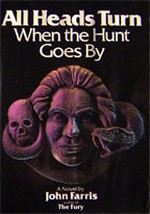
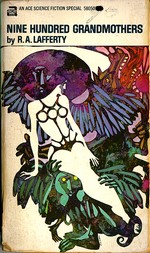
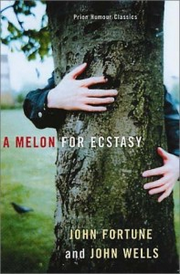
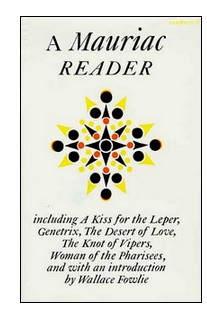 Bruce Allen wrote recently to recommend the novels of François Mauriac:
Bruce Allen wrote recently to recommend the novels of François Mauriac: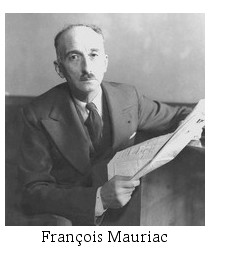 Fortunately for would-be readers, a good deal of Mauriac’s work is in print and easily available for purchase online. All of the above books are in print, as are several less-known works:
Fortunately for would-be readers, a good deal of Mauriac’s work is in print and easily available for purchase online. All of the above books are in print, as are several less-known works: 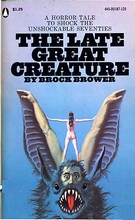 movie star of the 1920’s and ’30’s (he’s like Lon Chaney Sr. to the nth degree.) We learn of his fall from fame, and his attempted comeback in the phantasmagorical year of 1968. In his prime he made “Ghoulgantua”, the most terrifying film ever made (about a combination Frankenstein’s monster/vampire.) He created the famous monster “Gila Man” (a sort of werewolf lizard) during the war. Later he was blacklisted for political reasons, went to Germany to make a legendary, unreleased horror movie about the Nazi concentration camps that was supressed by both West and East Germany, and gradually sank into obscurity. Then low-budget Hollywood came calling with an offer to make a cheap Roger Corman-style Edgar Allen Poe rip-off titled “Raven!”
movie star of the 1920’s and ’30’s (he’s like Lon Chaney Sr. to the nth degree.) We learn of his fall from fame, and his attempted comeback in the phantasmagorical year of 1968. In his prime he made “Ghoulgantua”, the most terrifying film ever made (about a combination Frankenstein’s monster/vampire.) He created the famous monster “Gila Man” (a sort of werewolf lizard) during the war. Later he was blacklisted for political reasons, went to Germany to make a legendary, unreleased horror movie about the Nazi concentration camps that was supressed by both West and East Germany, and gradually sank into obscurity. Then low-budget Hollywood came calling with an offer to make a cheap Roger Corman-style Edgar Allen Poe rip-off titled “Raven!” book, Gardner attempts to hold the high ground against contemporaries such as Bellow, Mailer, and the fearsome nouveau romans of
book, Gardner attempts to hold the high ground against contemporaries such as Bellow, Mailer, and the fearsome nouveau romans of 
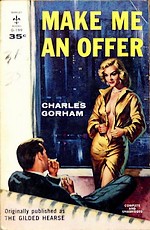
 Regular visitor Texas A&M professor
Regular visitor Texas A&M professor 
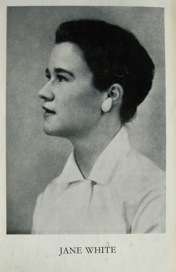 Brooks Peters added the following biographical information, along with a photo of Jane White, from the dust jacket of
Brooks Peters added the following biographical information, along with a photo of Jane White, from the dust jacket of 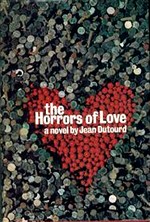
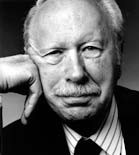 Praise such as this makes me want to hang my head in shame for not having read it yet, even after skipping past used copies in bookstore stacks perhaps a hundred times over the year (I think it was a Literary Guild selection, so there are plenty of cheap used copies out there in the U.S.).
Praise such as this makes me want to hang my head in shame for not having read it yet, even after skipping past used copies in bookstore stacks perhaps a hundred times over the year (I think it was a Literary Guild selection, so there are plenty of cheap used copies out there in the U.S.).